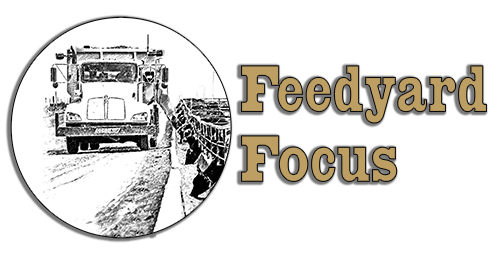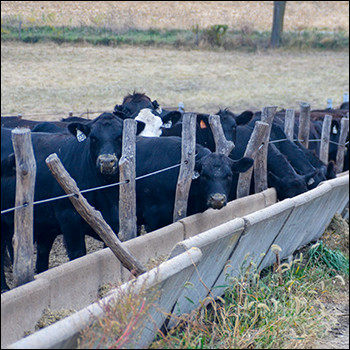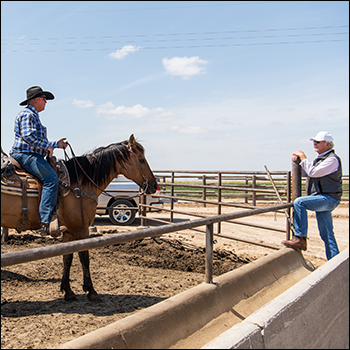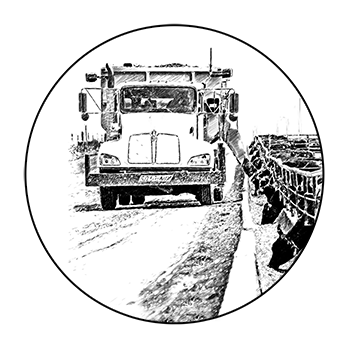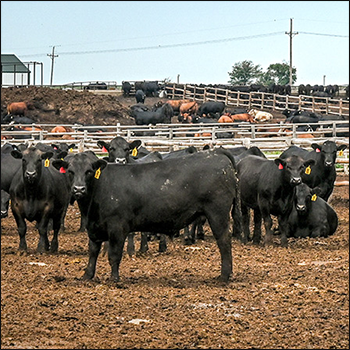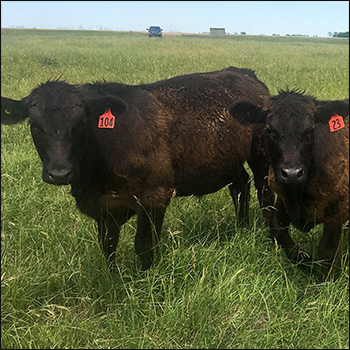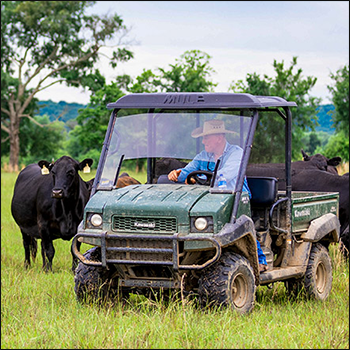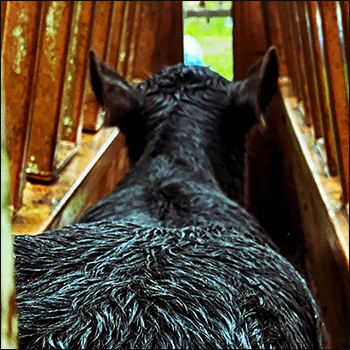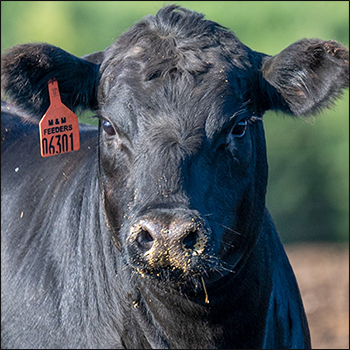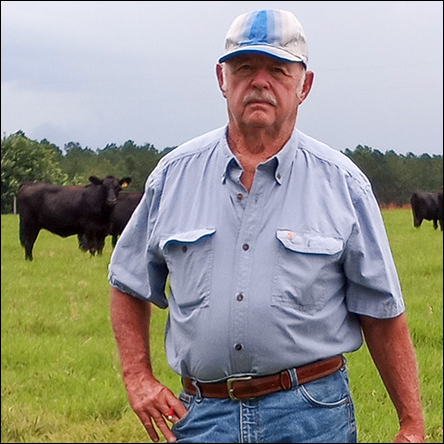Angus Advisor
Our team of Angus advisors offer regional tips for herd management for the fall season.
Southern Great Plains
david.lalman@okstate.eduFor this column last October, I summarized benchmarking data for commercial cow-calf operations. According to the Kansas Farm Management Association data, purchased and harvested feed costs accounted for a $244-per-cow difference in profitability among the most profitable one-third and the least profitable one-third operations.
Diligence in managing/minimizing purchased and harvested feed costs continues to represent a major opportunity for cow-calf operations. The challenge can be finding the optimal balance between meeting the animals’ nutrient requirements and cutting supplemental nutrients. Two simple steps can provide information to assist in decision-making related to the feeding program.
The first step is to complete a nutritive value test for purchased or harvested forage. Per-sample laboratory costs run from about $8 for protein only and up to around $100 for a complete wet chemistry profile to include in vitro digestibility (sample incubated in rumen fluid for 48 hours), fat, starch, complete mineral profile and so on. Most labs provide protein, energy and a mineral profile for less than $40.
How do you find a reputable laboratory to work with? The National Forage Testing Association (NFTA) has provided a laboratory certification service to improve the accuracy of forage and feed testing. Qualifying laboratories are listed on the NFTA website along with each laboratory’s performance grade.
The way you sample matters. Do not simply grab a wad of hay from a few bales, “mix” it up a little in a bucket and send it in. The NFTA provides excellent guidance on sampling procedures required to get accurate, consistent results.
Use a hay probe and sample at least 20 bales in different locations in the stack. Keep your probe sharp, and do not use a probe with a slanted cutting tip. The sharp edge of the cutting tip should be 90 degrees relative to the shaft, so more rigid stems are not pushed aside. Cores should be made 90 degrees to the butt end of the bale and reach from 14 to 24 inches (in.) into the center of the bale. Twenty probes (of dry hay) should generate about a half pound of sample, and that is an ideal amount for the laboratory to work with.
The second step is to use a nutrition evaluation program to assist in developing and evaluating your nutrition program.
Several commercial and university-sponsored programs are available. These models are user-friendly decision tools that are generally based on the National Academy of Sciences publication, Nutrient Requirements of Beef Cattle, Eighth Revised Edition, which is 475 pages. Although numerous programs are available, examples include:
- University of Arkansas: Cattle Grower Ration Balancer
- Iowa State University: BRaNDS
- University of Georgia: Basic Balancer
- Oklahoma State University: Cowculator
These are powerful decision-making tools. They allow you to combine information about the nutrient content of your forage and concentrate feeds with specific conditions, class of animal, level of desired performance, body condition, mature weight, breed, etc. Extension educators, feed industry experts and veterinarians can provide guidance if needed to get you started.
I’ll close with a recent example. At our cow-calf research unit, rain delayed harvest of a Bermuda grass field until mid-July. The field was heavily fertilized, and the combination of ample rain and good fertility yielded a lot of mature hay, testing 6.6% protein and 49% total digestible nutrients (TDN).
I used Cowculator to evaluate the cost of using this lower-quality hay for our first-calf heifers through the third trimester. By the time protein and energy supplement was included to ensure weight gain and maintenance of good body condition, the daily feed cost was $1.56. This assumed the hay valued at $74 per ton (yes, probably too high).
A neighbor had just harvested second-cutting hay testing 9% protein and 58% TDN, for sale at $90 per ton. It sounded expensive to me. However, Cowculator indicated no supplement was required to achieve nearly identical performance when the heifers were fed this nice-quality hay. I simply bumped the price of the high-quality hay in the feed list until I arrived at the breakeven daily feed cost of $1.56. At the end of the day, my neighbor’s hay was worth $115 per ton in this specific situation.
Western Region
randyp@csufresno.eduFall–calving herds Main focus: finish the calving season and prepare for the breeding season
- Sire selection. Continue developing a list of potential artificial insemination (AI) sires. Focus on bulls that will produce high-quality herd replacements. Talk to other producers about bulls that have worked for them. I also like to read bull sale reports and see if any sires are consistently producing the high-selling bulls in numerous programs.
- Prebreeding vaccinations. Be sure to get cows and heifers vaccinated with prebreeding vaccinations at least 30 days prior to the start of the breeding season. At a minimum, females should be receiving at least two vaccinations: 1) the respiratory complex plus leptospirosis and possibly vibriosis, and 2) either a 7- or 8-way clostridial vaccination.
- Deworming. Consider deworming females at the same time they are vaccinated with either an injectable, paste or pour-on product. We prefer to deworm twice per year and use an orally active product in the fall and a pour-on product in the spring or early summer.
- Mineral injection. Consider injecting females with Multimin® at the same time vaccinations are given. Boluses such as selenium or cooper boluses could be used in place of Multimin.
- Retained placenta. Continue to monitor females for the incidence of retained placenta. If problems arise treat them promptly with a prostaglandin injection (5 or 6 cc). If that treatment does not result in the females cleaning promptly, then re-inject with another prostaglandin injection and combine that injection with an antibiotic either infused into the uterus or given either intramuscularly (IM) or subcutaneously (sub-Q).
- Mineral supplementation. Be sure females are receiving adequate levels of calcium, phosphorus and trace minerals deficient in your area. Mineral supplementation becomes even more important as we approach the breeding season.
- Body condition score (BCS). Continue to monitor BCS of calving females. The target level of BCS is 5.0 (scale of 1 to 9) for both cows and heifers. This level of body condition should be maintained during the breeding season. However, this becomes more difficult as forage resources start to deplete this time of year and as cows’ nutrient requirements increase due to an increasing lactation curve.
- Overconditioned. Avoid getting cows overly conditioned during the breeding season, as reproductive performance starts to decline if cows are above a BCS of 6.5 to 7.0. With the drought conditions in the West this year, I don’t think we are going to see many overconditioned beef cows. This is most typically a problem with donor females that have not raised a calf for a period of time.
- Protein and energy supplementation. Be certain both protein and energy requirements of females are being met. If possible, try to have females in a state of positive energy balance (gaining weight) going into the breeding season. However, this is not easy to achieve because of the conditions described above. With drought conditions, supplementation is even more important. The best way to monitor the level of protein supplementation is to monitor fecal output. If the females are receiving adequate levels of protein, their stools will flatten out on the ground. If the stools appear to be highly fibrous and don’t flatten out on the ground, most likely the females are protein deficient. The best way to monitor energy supplementation is to simply keep a very close eye on the level of body condition. Both energy and protein requirements must be met if cows are going to cycle and breed on time.
- Nursing calf health. Treat calves for either scours or pneumonia promptly. It is well-advised to have first and second treatment options for both conditions.
Spring–calving herds Main focus: getting calves weaned and keeping them healthy
- Minimize weaning stress. Try to minimize stress on weaned calves as much as possible. Pasture weaning is a big advantage. Try to avoid dry, dusty lots for weaned calves. Shade is extremely valuable, and either sprinklers or a water wagon to control dust is well worth the trouble and expense in my opinion.
- Temperature changes. Hopefully Mother Nature cooperates in terms of weather changes as weaned calves are getting adjusted and transitioned to a new environment. In our experience, the difference in temperature between the daytime high and nighttime low is extremely important. If that number exceeds 40 degrees, we experience more problems with respiratory disease.
- Started on feed. Get calves started on feed as smoothly as possible. Try to avoid any big changes either in terms of the amount of consumption or the type of ration being fed. Transition calves slowly from a total forage diet to a combination of roughages and concentrates.
- Rate of development. Be sure both weaned bull and heifer calves are being developed at adequate rates of gain so differences in terms of genetic potential for growth can be exhibited. However, neither sex should be developed at extremely high rates, as excessive fat deposition can hinder future reproductive performance and detrimentally affect foot and leg soundness. Our target level of performance in developing bulls is an average daily gain (ADG) of 3.0 to 3.5 pounds (lb.) per head per day. A general rule of thumb concerning the level of concentrates for bulls to achieve that level of performance is 1% of body weight (example: 600-lb. bull calves need 6 lb. of grain or concentrates per head per day; 900-lb. bulls need 9 lb., etc.). Our target level of performance in developing heifers is an ADG of 1.5 to 1.75 lb. per head per day. I prefer to develop females on pasture without them ever receiving any grain or concentrates. They must have access to good pasture resources in order to achieve this level of performance. For many producers, good pasture is not available during the fall and winter, and thus they must feed their females in a lot during this time of the year.
- Parasite control. After weaning, control internal and external parasites, and heifer calves should be Bang’s vaccinated.
- Business or operational plan. Fall and early winter is a good time of the year to put some thought into developing or refining business and marketing plans for your operation. Get input from employees and involve them in the process. Many times we set operational goals without input from the people who are going to be involved in helping us to achieve those goals. It is typically much easier to get “buy in” from employees if they feel that they had input in developing the mission and goals.
Southeast Region
jduggin@uga.eduConsumers of all kinds are attracted to quality. Consumers prefer to go to restaurants with quality food and service and tend to avoid the others. When consumers of all kinds spend money, they want their expectations to be met. It is no different for every sector of the beef chain. From the commercial bull buyer to our international beef customers, quality means value, consistency and integrity.
First, let’s focus on the commercial bull buyer. More and more cattlemen are understanding quality bulls can be a game-changer for their program. Carcass merit traits and growth performance have been a focal point for many seedstock producers.
Commercial operations that have reached carcass and performance goals will be looking to improve traits associated with fertility, as well as convenience traits such as foot design and udder quality. Seedstock bull producers who bring this added value of endurance will quickly gain favor with commercial cattlemen. This reiterates real quality is a full-package deal.
Progressive commercial cattlemen are looking for stoutness and functionality to go along with genetic merit records, but it doesn’t end there. Quality can also be associated with service. Many seedstock producers are providing additional customer service, such as free delivery or holding bulls for buyers until breeding season begins. These are just a couple examples of what some producers are doing to provide quality to their customers.
Second, feeder-calf buyers and feedlot owners understand quality from a different perspective. Cattle managed well throughout calfhood and during preconditioning bring premiums due to their durability and feed conversion in the yard.
Commercial cattle should be in BCS of at least a 4 and hopefully a 5 when vaccines are delivered to ensure efficacy. Vaccines should be administered according to Beef Quality Assurance (BQA) guidelines with low-stress handling. Calves stressed through the weaning management phase will have reduced immunity in the feedyard.
Management that includes preweaning vaccinations and fenceline weaning uses tools to help reduce stress and improve the health in newly weaned calves for the next step of the beef chain. A quality feeder calf is geared to grow and stay healthy, resulting in a high-quality end product.
Over the last three decades, National Beef Quality Audits have helped the industry focus on improving inconsistencies in beef palatability and management. Through a focus on improving beef quality, the beef industry now has a truly excellent product that brings consumers back time and again.
Now we can further focus on food safety, consumer perception and telling the story of the American beef producer. Quality, whether in the live animal or at retail, is associated with added value, consistency and integrity. It can be observed in superior genetics, excellent management and solid customer service.
Midwest Region
baileyeric@missouri.eduCow depreciation and the cow-calf business Quality reproductive management is a cornerstone of successful cow-calf production. Buying top genetics is not the only piece of successful reproductive management. An underappreciated metric of reproductive success is calving-season distribution. Simply put, this is a measure of when calves are born within your calving season. When animal scientists advocate for reproductive management tools like AI, many benefits are touted including better genetics, fewer bulls and a shorter calving season. Despite much data offering insight into the value of these improvements, there is still a perception in the industry that AI takes too much labor and good facilities to be successful. However, let’s explore the value of tightening up calving-season distribution.
I recently discovered an online calving-season distribution calculator by the Beef Cattle Research Council out of Canada (https://www.beefresearch.ca/research/calving-distribution.cfm). You enter the data of the first calf born, number of calves born in various stages of the calving season and weaning date. At the bottom of the page, it will show the calving-season distribution, industry average and value of your calves relative to calves born in an industry average distribution.
The industry target calving-season distribution is 60% of calves born within 21 days, 85% of calves born within 42 days and 95% of calves born in 63 days. Several factors play into these distributions, outside of the use of reproductive technologies.
An important one is the BCS scale of cows going into calving. Cows that calve at a BCS of less than 5 often take longer to rebreed. This is because the body uses nutrients for maintenance, lactation and growth before reproduction. Think about young cows. They often rebreed at a lesser rate than mature cows because their body is prioritizing growth before reproductive function if nutrients are limited.
Cow herds with poor calving-season distributions often have calves evenly distributed throughout the calving season. For example, 30% of calves born in the first 21 days, 60% of calves born in the first 42 days and 90% of calves born in 63 days. Only a third of the cows are ready to breed on the first day of the breeding season.
What would happen if we increased the proportion of cows ready to breed on Day 1?
I compared distributions of 30-30-30-10 to industry standard 60-25-10-5 using the calculator above. The first calf was born on Feb. 15 and calves were weaned on Nov. 15, with an average weaning weight of 525 lb. for the even distribution and 548 lb. for the industry-standard distribution. I assumed this was a 100-cow herd with 1.85 lb. calf ADG, 3.8% death loss and $1.60 per lb. sale price. The industry-standard calving-season distribution calf crop was worth an additional $3,588 than with the even distribution.
Having more calves born earlier in the season makes the calf crop older on average at sale. If they’re older, they have more days to grow. Thus, the value of improving calving-season distribution was $35.88 per calf.
Being able to increase calf value by $36 per head just through improved calving-season distribution will be helpful. This does not require tagging calves to track. Just count calves every time you see the cows during calving and write it down. At the end of the calving season, count how many calves were born in three-week intervals throughout the calving season.
Another valuable resource on this topic is here. I highly recommend reading this extension publication for further explanation.
